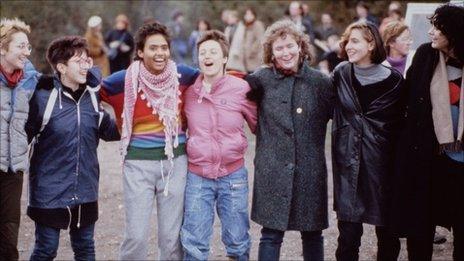Greenham Common pictures highlight life in the peace camps
- Published
The housing of US nuclear warheads prompted thousands of women in 1981 to set up camps in protest at Greenham Common.
It was the height of the Cold War and for six years, the groups peacefully campaigned against the arrival of the cruise missiles to the US-occupied air base in Berkshire.
Wendy Carrig was a student photographer and found the camps a perfect setting for her final-year project.
Now, more than 30 years on, some of Ms Carrig's last undeveloped negatives showing daily life at the site have been made into prints and will form an exhibition at Greenham Common Control Tower.

Wendy Carrig documented the lives of women at the camp for a few weeks as part of a college project in 1985
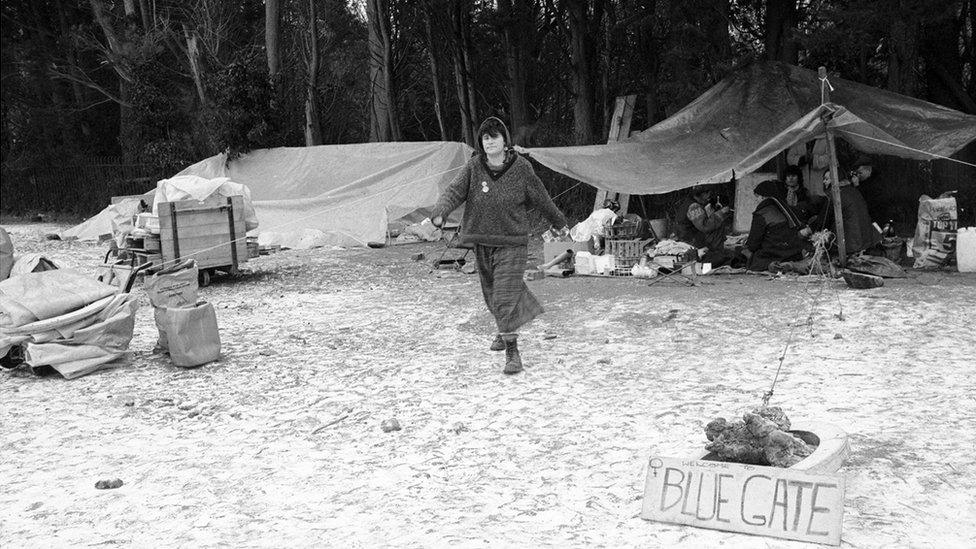
The student photographer experienced daily evictions, slept in makeshift tents, had bricks thrown at her and battled sub-zero temperatures during her time at Blue Gate camp
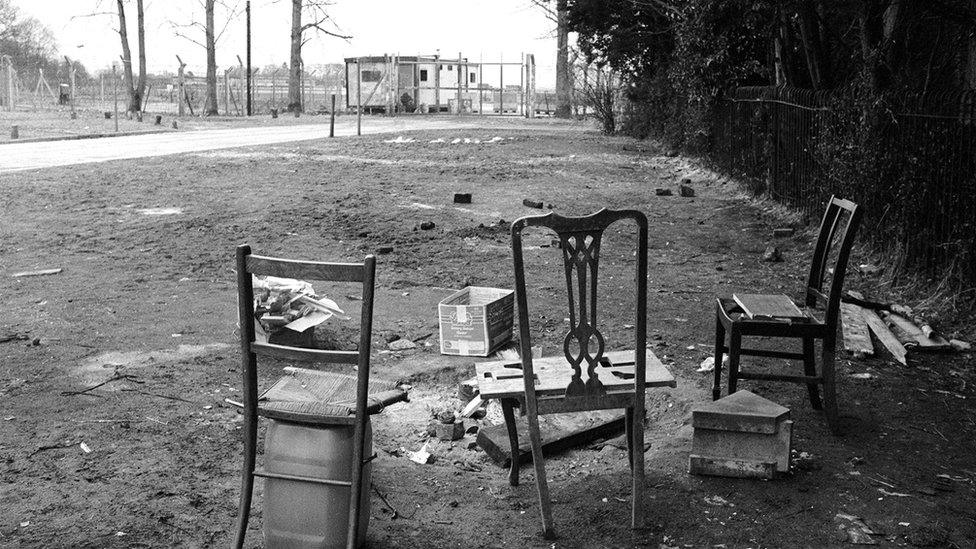
The protests were brought to an end with the Intermediate-Range Nuclear Forces Treaty signed between US president Ronald Reagan and Soviet leader Mikhail Gorbachev in 1987, which began the drawdown in nuclear weapons and meant the cruise missiles were taken back to America
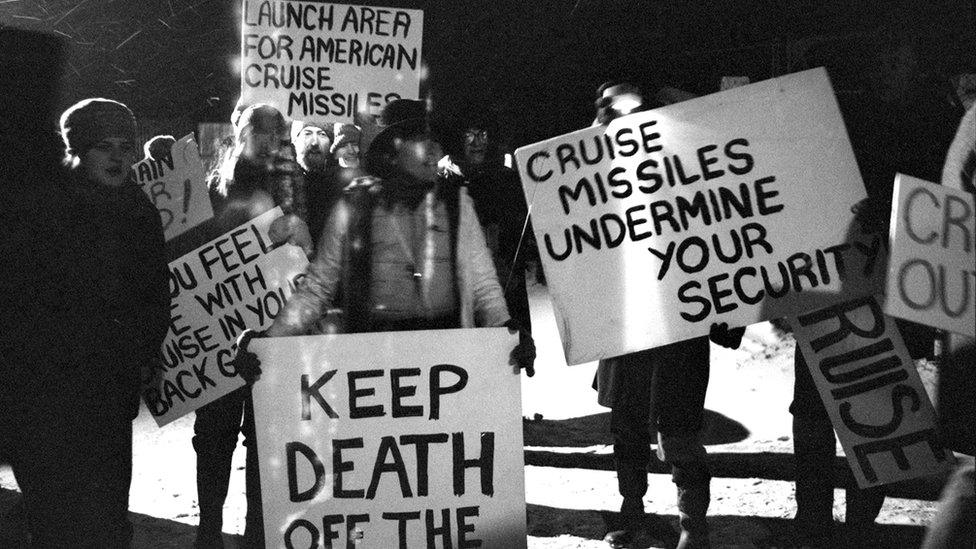
Despite the protests having peaceful intentions, some women were arrested and sent to prison as a result of their actions
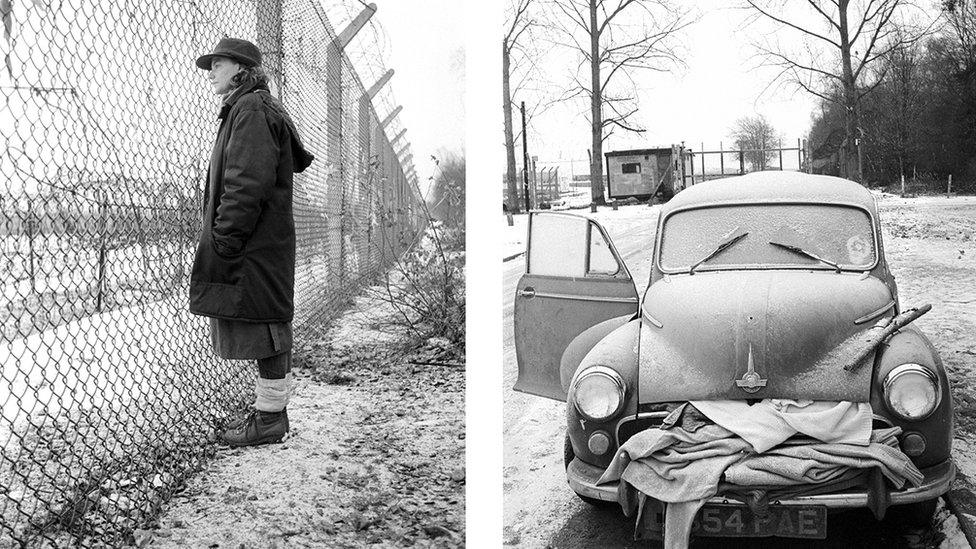
Wendy Carrig (pictured left) took the pictures on her Nikon FE 35ml camera. On the right is a Morris Minor that Ms Carrig said she once slept in. The car did not run but was used as a makeshift shelter from the cold
The exhibition of photographs recording life at the peace camps in 1985 will be on display from 9 December to 9 March 2019.
- Published7 September 2018
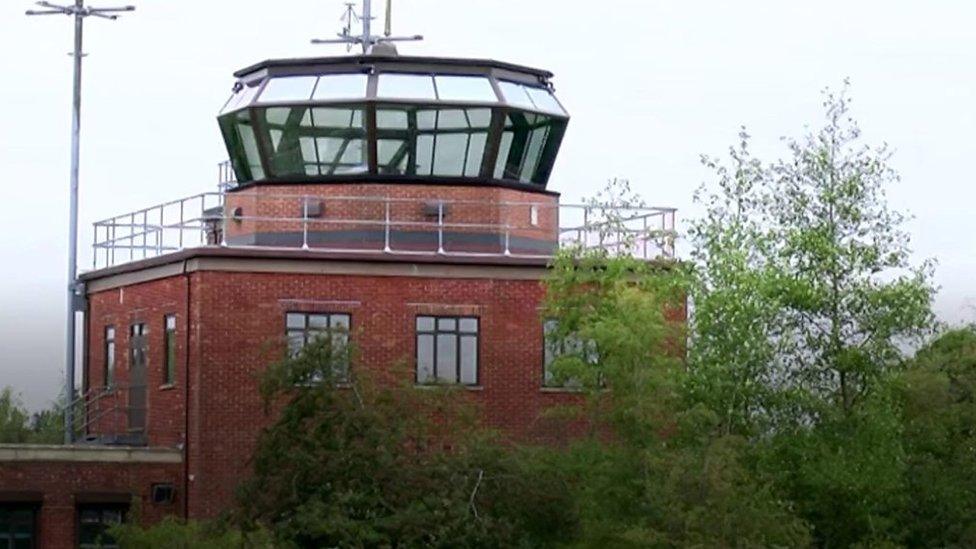
- Published9 September 2017
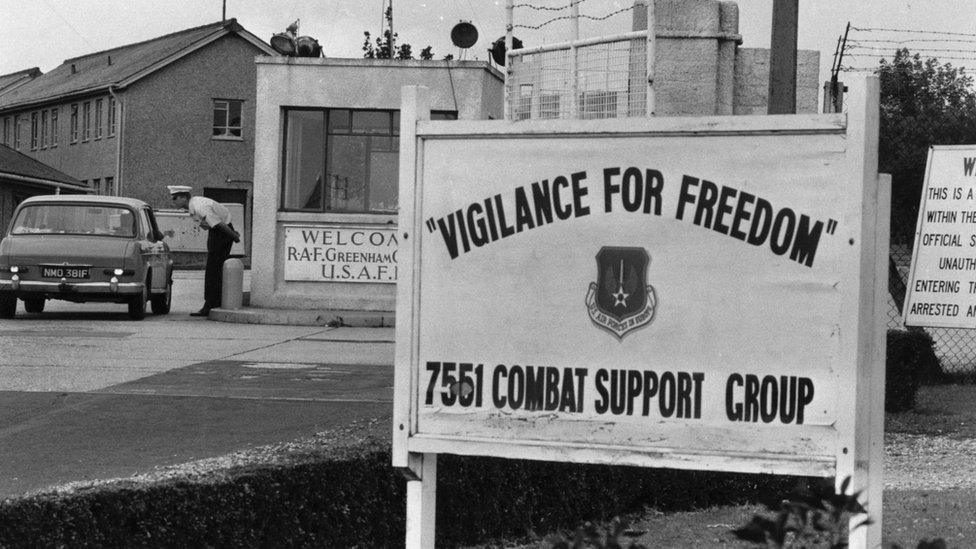
- Published9 April 2013
